Pander S4 Postjager colors and markings
| Around 2010 Execuform issued a 1/72 scale vacform model of the Postjager. A 1/72 resin model is expected before the end of 2012. I initially planned to build the Execuform vacform, and started researching the subject. For some time, the black and white photos confused me thoroughly. But patterns emerged slowly, and it is now possible to analyze the colors with just five photos. The result was slightly surprising.
|
Black and white film types
orthochromatic film ('ortho') is the oldest black and white film. It represents red and orange as black, and makes blue appears lighter. Blue-eyed people have nearly white eyes in ortho photographs. Anecdote: since this film is not sensitive to red light, it can be processed in a red-lighted 'dark room', as you will still see in movies!
panchromatic film ('pan') was introduced in 1906 and slowly replaced ortho film. It represents all colors with a realistic gray value
complicating matters is the use of the color filters
Color analysis of the Postjager markings
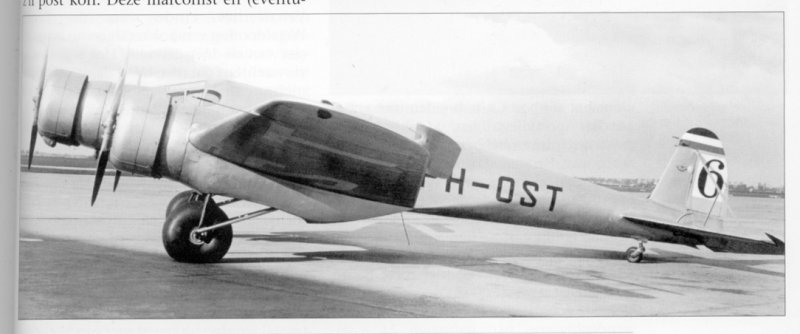
The red-white-blue fin tip shows clearly that this is an ortho photo: red is black, blue is rather light. (From: Hazewinkel: Pander - een Haagse vliegtuigbouwer, page 117)
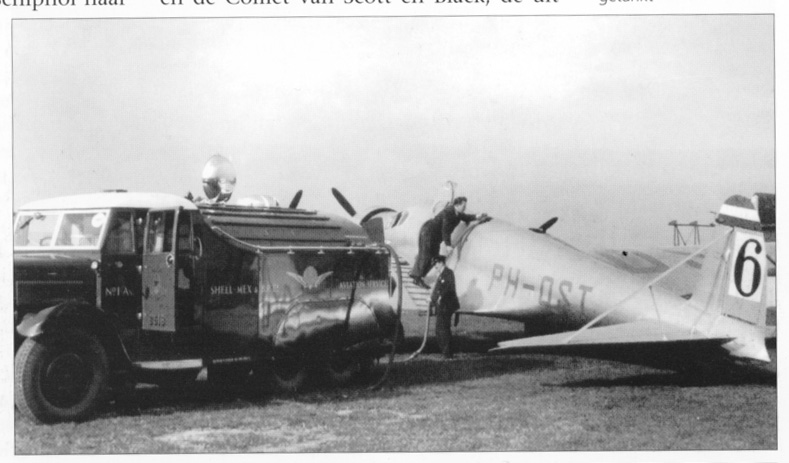
This photo is clearly made with pan film: the red portion of the fin tip red-white-blue has a normal grey value, the blue part is slightly darker. Now look at the PH-OST registrations on the rear fuselage and the wings: they have a grey value, and are clearly not black. Since red and orange are the only colors that show this difference in ortho and pan films, they must be in that color range. Since they are lighter than the red part of the fin tip, they must be orange or orange-red. The Pander factory logo on the tail appears to be the same color. (From: Hazewinkel: Pander - een Haagse vliegtuigbouwer, page 113)
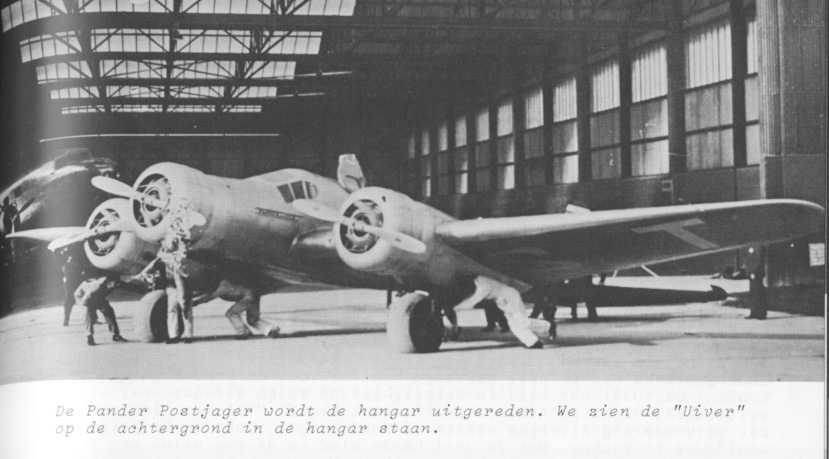
This photo does not offer a direct clue whether it was made with ortho or pan film. (From: Hooftman: Nederlandse vliegtuigencyclopedie - Pander S4 Postjager, page 89)

However, combined with this photo we can now be sure that the previous photo was made with ortho, and this one with pan. The different representation again shows us that the lower side was painted orange or red. Considering the grey value, orange is most likely. The ST lettering has the same grey value as the rest of the aircraft, and thus appears to be silver dope. Note that 'POSTJAGER' in large capitals on the nose is painted in the same color as the lower side of the wings - orange. (From: Hooftman: Nederlandse vliegtuigencyclopedie - Pander S4 Postjager, page 75)
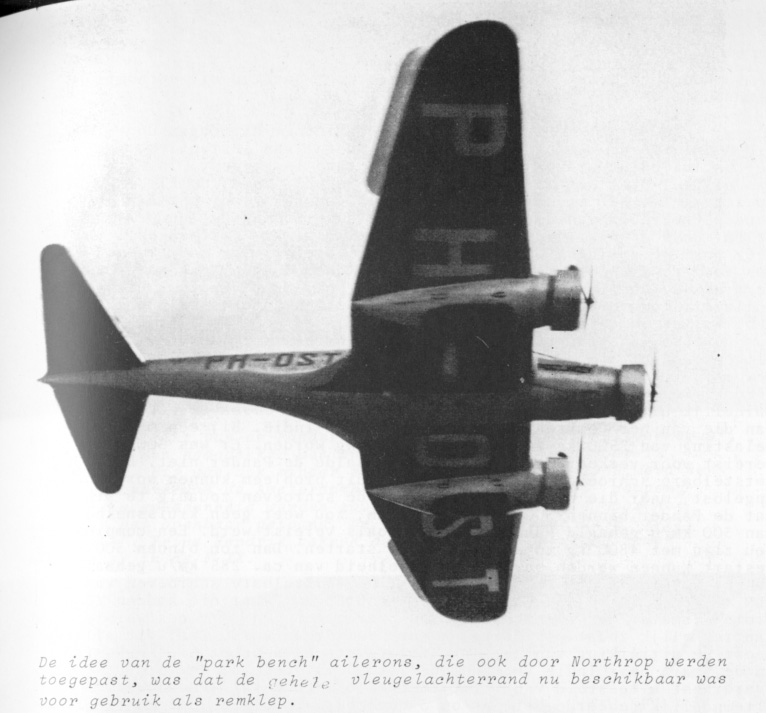
This photo shows the demarcations of the orange areas on the lower side. Note that the tailplanes are also orange on their lower sides. (From: Hooftman: Nederlandse vliegtuigencyclopedie - Pander S4 Postjager, page 41)
Other bits of evidence
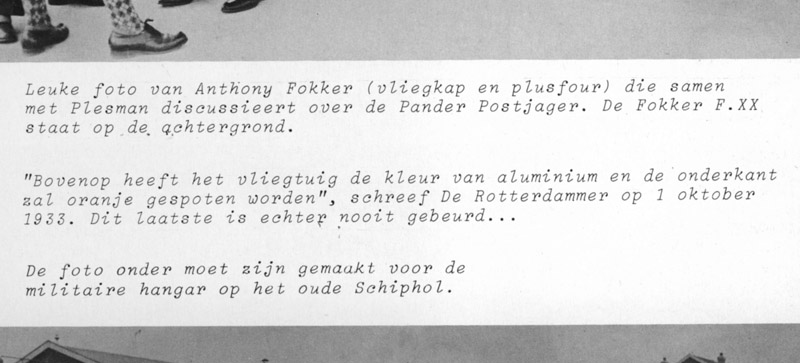
Circumstantial evidence that the lower side was (going to be) painted orange. The middle piece of text translates: "Topside the aircraft had the colour of aluminium and the bottom side will be painted orange' wrote De Rotterdammer newspaper on 1 October 1933. The latter never happened though." I don't think the last statement is correct, but the statement makes clear that the plans always were to paint the lower side orange. (From: Hooftman: Nederlandse vliegtuigencyclopedie - Pander S4 Postjager, page 45)
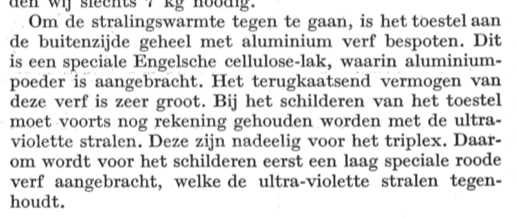
More details on the painting: the plywood was first painted with 'red paint' (maybe red oxide dope?) followed by English nitro-cellulose paint with aluminium powder. (From: De Ingenieur 8 december 1933 - Constructieve bijzonderheden van de Pander-Postjager PH-OST, page 227).
C. ter Horst, in 'De Modelbouwer' (June 1987) reports that the complete aircraft was covered with Madapolam, a bleached cotton fabric. This avoided the use of serated ('pinked') linen rib tape to cover joints in the wood structure, and ensured a very smooth surface. The beech plywood was Bakelite (phenol formaldehyde) bonded, a fairly recent innovation that made it waterproof and improved the durability greatly.
Wikipedia reports that Madapolam is a soft cotton fabric laid out in linen weave. It was famously used as the covering for the de Havilland Mosquito, tautened and stiffened with aircraft dope.
The finishing techniques of the de Havilland Mosquito make an interesting comparison: "The tailplane, and fin, as well as being wooden, were covered in wood, then Madapolam fabric. The fabric was treated to Scheme "Z," which consisted of two coats, of half-strength, followed by three coats of full-strength, red dope, followed by, at least one, but, often, two coats of light-reflecting aluminium (not silver) paint." A great photo of the application of the Madapolam fabric can be found on the webpage dedicated to William Herbert 'Bill' Grace (4/5 down the page).
Later I remembered that de Havilland also used fabric over the wooden fuselages of the Vampire and Venom. It is described in The History of the De Havilland Vampire. Photos of the wooden structure can be seen at Uschi van der Rosten's De Havilland Vampire References.
I tried to find more information about the practice of covering the plywood skin with fabric. I consulted the following references, but found almost nothing, suggesting it was not common.
ANC-18 Design of wood aircraft structures, 1951. Does not mention it
ANC-19 Wood Aircraft Inspection and Fabrication, 1951. Only the sections 5.767 - 5.769 and figure 5.104 discuss fabric covering of plywood
Werkstattpraxis für den Bau von Gleit- und Segelflugzeugen, Jacobs, 1942. Does not mention it, possibly because the practice is too heavy for gliders
Flugzeugbau: Handbuch für die Werkstattpraxis, Schneider, 1962. Does not mention it
General markings
aluminium dope overall (including the many Elektron sheet metal parts) with orange lower wings and lower tailplanes
PH-OST in orange on the side of the fuselage
PH-OST in orange on the upper wings
PH-OST in aluminium dope on lower wings
Pander logo on tail in orange
presumably Fay-Egan logos on props (other sources report Hamilton Standard)
rear side of the props (outside cowling contour) are painted black
Additional markings during the Indonesia flight
'POSTJAGER' in large capitals on the nose, most likely orange
mystery marking between the tail and registration. The basic shape is a sphere with 'wings'. This photo appears to be orthochromatic, judging from how dark the orange registration are represented.
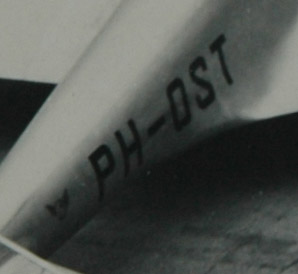
Additional markings during the London-Melbourne race
Dutch flag on fintip, black '6' on white area on rudder
'PANDERJAGER' inside a red/white/blue stripe on the nose, both sides, most likely black, possibly orange
Fay-Egan logo absent on center prop
Modeling links
Drawing under construction
Starting with the Postjager drawing by C. ter Horst (NVM), I made a completely revised drawing based on research in archives. It's not done yet, so it's shown in a small size here.
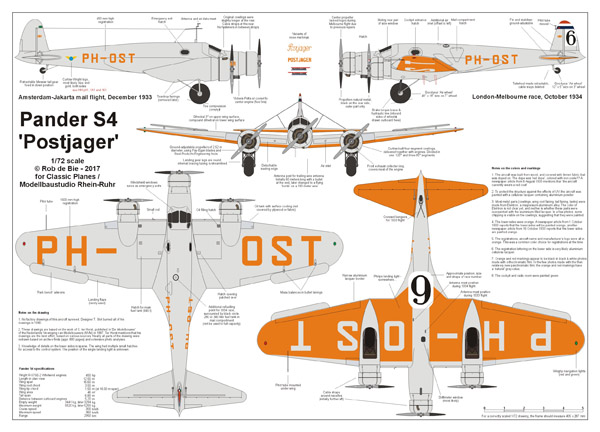
Research links
YouTube: 'Luchtvaart en Shell' with Postjager footage. Pushed out of LVA Hangar I, Mr De Kok (Shell director) arriving, passenger on test flight on 19 October 1933.
YouTube: 'KLM 18. London-Melbourne race' with the Postjager at Amsterdam-Schiphol (03:20) and Mildenhall (04:15).
YouTube: 'The Great Air Race - England to Melbourne 1934' with some Postjager footage.
GettyImages film: 'Prince Edward talks to Dutch pilots before start of Australian Air Race in England' with nice Postjager footage.
Nationaal Archief - Postjager foto's
Nationaal Archief - Panderjager foto's
Nederlandse Luchtvaart Forum - Pander S4 Postjager
Nederlandse Luchtvaart Forum - Pander S-4 de pechjager
Gemeente Amsterdam Stadsarchief - 30470: Archief van Luchthaven Schiphol: foto's en films
Historische Kranten - Nederlandse dagbladen uit de 17e, 18e, 19e en 20e eeuw by the 'Koninklijke Bibliotheek' allows you to search 400 years of Dutch newspapers online. If you go to 'Geavanceerd zoeken' and check 'Losse illustraties' you will search photos. Some random Postjager results:
Het Vaderland 17 May 1933: 'De Postjager van Pander - Een bezoek aan de fabriek - de bouw vordert snel'
Algemeen Handelsblad 19 May 1933: 'De snelle postjager van Pander'
Telegraaf 8 August 1933: 'Panders snelle Postjager in aanbouw' "Heeft thans nog een rood jasje aan" and "Een [motor] is er reeds gemonteerd, de beide anderen dobberen op het oogenblik op den oceaan".
Haagsche courant 8 januari 1934: Briefwisseling "De onderkant van den vleugel van den Postjager is Oranje-kleurig"
Haagsche courant 8 augustus 1933: Briefwisseling "Vleugel en romp worden heelemaal met aluminiumverf bespoten, zodat de machine zilverkleurig wordt. Onder deze laag bevindt zich nog een roode laag, welke de ultraviolette stralen uit het zonlicht absorbeert."
Bataviaasch nieuwsblad 4 October 1933: 'Panders Postjager op Schiphol' with unique photo
De Tijd, 18 August 1933: 'Pander's Postjager' "Het profiel (N.A.C.A. M12) is bikonvex"
Bataviaasch nieuwsblad, 22 August 1933: 'De Postjager van Pander' with unique engine installation photo in Rijswijk.
Soerabaijasch handelsblad, 16 October 1933 "Bovenop heeft het vliegtuig de kleur van aluminium. De onderkant is oranje gespoten"
De Tijd 9 december 1933 "De zilver glanzende vogel, die in groote roode letters den naam "Postjager" op den romp draagt, werd ..."
Het Vaderland 25 September 1934: 'Incident met den ex-Postjager' right landing gear retracted on second flight on 24 September
Algemeen Handelsblad 29 September 1934: Geysendorffer vertelt
Algemeen Handelsblad, 16 October 1934: "Uiver en Postjager naar Mildenhall", new photo, no prop logos??
De Indische courant 27 October 1934: 'Het einde van den Postjager - Bij 't opstijgen te Allahabad verbrand' with unique old photo
De Indische courant 23 May 1935: 'Van scheepswerf tot vliegtuigfabriek - Plannen van constructeur Slot'
Algemeen Handelsblad 9 December 1933: 'Postjager om 4.15 vertrokken' with description of the starting preparations
Return to models page








